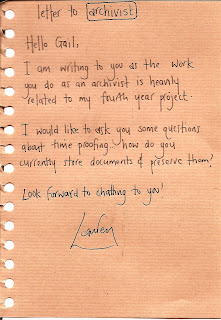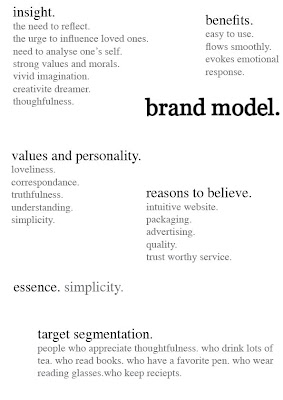Having spent the last couple of days in Newcastle attending the ISDN3 conference on Service Design I have lots of photos, notes and thinkings to get down on paper...
The introduction by Bob Young:
constructing engagement not products.
epistemology of design practice : epistemology - the theory of knowledge especially with regards to its methods, validity and scope. epistemology is the the investigation of what distinguishes justified belief from opinion.
"edge services" : a phrase I had never heard before, initial reaction is this phrase is yet another terminology being used rather frivolously.
engagement the design process has on lives and attitudes.
sophisticated multi dimensional model.
"sense of listening manifested through the act of story telling."
hugentobler and jones: the role of design in society, appropriate of descriptions of service design. allowing designers to sufficiently navigate and contend.
"adequate way of listening to people and to the world."
People as a subject are objects of research.
Methods - visual, verbal and conceptual to help us articulate a complex system.
how can services be prototyped?
'language of engagement'
centric approaches. artefact centered. human centered.
This conference was an important opportunity - follow up different perspectives.
"The rigour of good service design methods and process has not yet been identified."jonathan ive
Author centerdness? limits to the applications of service design methods?
real people in a real world context.
Anna Meroni. "approaches to and reflection on sustainable social innovation and service design."
look beyond mainstream behaviour and opinions and know-how to foster new ideas...
describes the UK as the
"the mythic land of service design"Society emits signals, signals are detected, promising signals are re-inforced, society is stimulated.
Innovation driven by ordinary people.
Sense making.
Service design still has no identity and no langauge.
It is all about the study of behaviours.
Social innovation: changes in the way groups of people act to obtain results ( to solve a problem or to generate new opportunities).
Pinpoint the demand for the product, the service and the solution.
Service design explores interaction, relationships, experiences and the exchange of benefits.
Importance of relationships. how can I design a new attitude? atttitudes can be found all over the world. Styles of implementation.
Restore meaning and value to everyday life.
Make people happy :) to be truly creative you much turn upside down current ways of thinking.
Ordinary people involved must have a vision of how things should go, be sufficiently motivated to follow it and feel able to do so.
I want to be an expert in imagining future scenarios.
Subjective well being is related to a belief in interpersonal relationships.
Designer as a facilitator - creates situations and conditions.
an 'open product' can only be completed by contribution of user.
People and object are enhanced by service.
The search for meaning and authenticity - material comfort is not enough.
Service Design should not be about solving problems or preventing something i.e - relieving services. they should also build competence and confidence. address the need for engagement - help people to feel and to be engaged.
Take inspiration from people - listen and imagine.
"connected to the present, the past and intentions for the future."
The meaning of product and artefact is related to the quality of a subjective experience.
It must contain meaning and information, make sense for people and make a positive experience.
Create platforms of tool and knowledge to enable and power.
Question : link between insights gained from ethnographical studies.
Creating service scenarios are a powerful projection tool..they provoke discussion..
Must observe the solution over time.
How do you perceive the role of a designers? they must detect, learn to listen, communicate well and visibly and feasible imagine how the future could be. be able to create visions and tell the story.
benedict singleton.
edge services are service which operate between and around the boundaries of private and public. the practice and art of negotiating boundaries. tools for conviviality. ARK design solutions for post crash civilisation.
lauren tan. "insights into design and its contribution to the public sector."
"what we seek is not the meaning of life, but the experience of being alive."joseph campbell 1997.
We must challenge old models and ways of doing things.
Understanding the context - gather, understand and then disseminate the information design helps people explore who we are, who we want to be and enable us to form new connections and create new ideas of old problems.
"the innovation is in the proces, not the outcome" dott o7
Conversation as a form of research.
Habits. vision. commitment. knowledge.
Dott is embedded with legacies as it was about working WITH people, not FOR them.
Look beyond technology ,product, branding and business and look at the experience of humans.
Dialogue with designers.
"if you always do what you've always done, you'll always get, what you've always got"
deborah szebeko. "the barriers and enables for designers working with public sector organisations."
working every day with real people and real challenges.
Support ordinary people with amazing ideas. Tap into people in the community.
the real work experience 23.2% of design graduates get work in the public sector.
The word 'design' is a problem in itself. how can we tell people what it is? this is the challnge. we must invite them into the process.
the main challenge is the language barrier - we must learn to re-communicate with others.
Our role as designers is to make really challenging notions accessible to ordinary people.

























